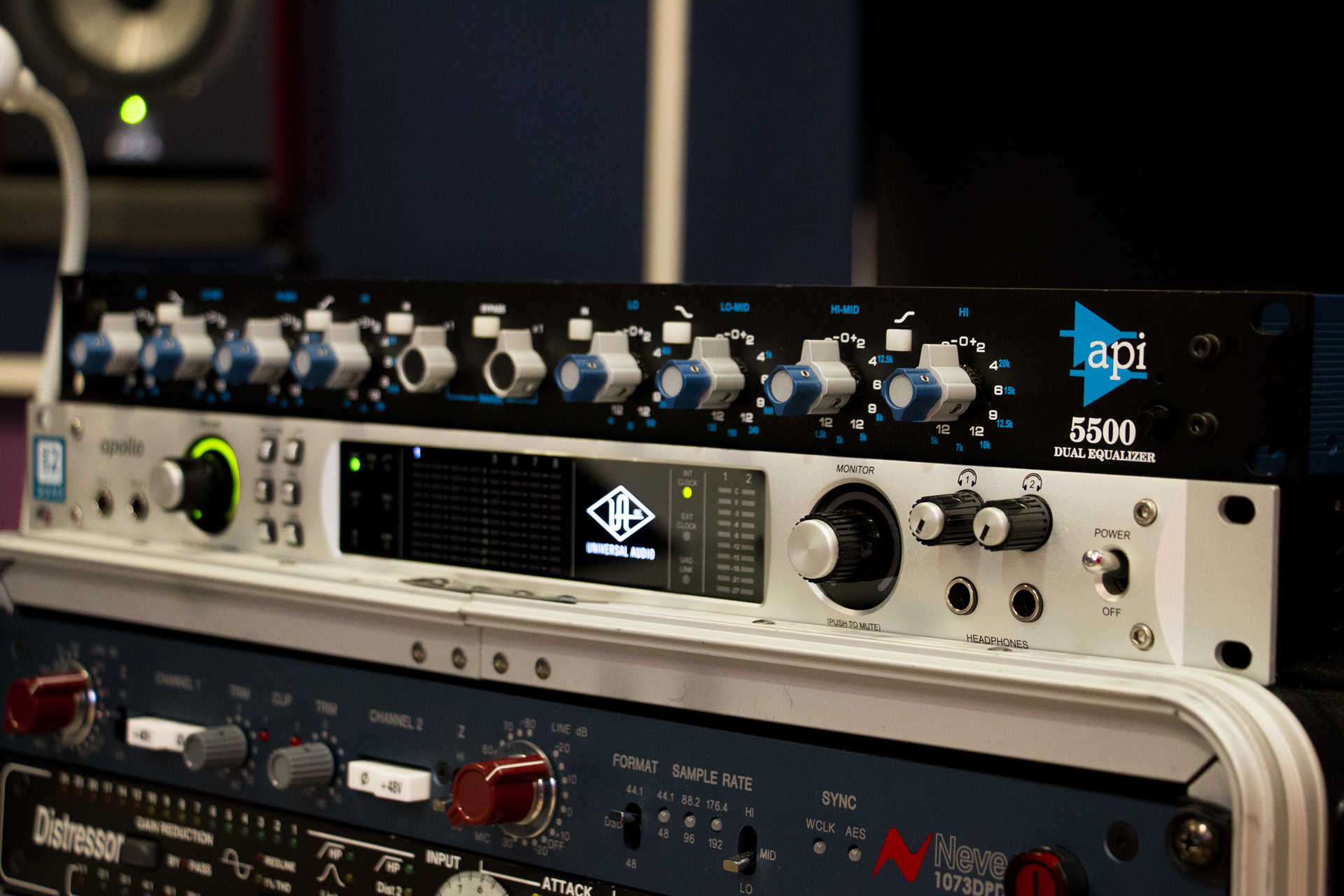
Two-channel parametric equalizer API 5500 @ RENEWSOUND studio productions, audio recording studio in Sofia.
The API 5500 is based on the foundation of one of the most musical sounding EQs in the musical recording industry, the API 550. Designed by the founder of Automated Processes Inc. Saul Walker. The 550 circuit design – in the 1960s, as well as the fully discrete class-A / B 2520 amplifier are used here as well. In fact, the API 5500 is as close as possible to the original API 550B modules.
API 550B X 2 = API 5500
The bill is easy but … 5500 is something more … ?
The 5500 has two 4-band API 550B equalizers mounted side by side. But a useful new option extends the 5500’s capabilities by allowing manipulation by changing the gain / cut steps from the initial 2 dB to 1 dB or 0.5 dB steps. These additional ranges are just like the 550 variants that were custom models used for mastering: the API 550D with ±1dB steps and the 550M with ±0.5dB steps.
That is why the API 5500 is very often effectively used as a mastering equalizer.
We can say that API 5500 is a kind of “New Classic”. The equalizer is suitable and finds a very good application when recording stereo audio material, where precisely selected and matched as a stereo pair API equalizers do a great job.
Of course it can also be used as two separate non-recordable EQs. They can even be used sequentially if needed. An indispensable option is to shape the sound of the guitar, percussion and whatever else you decide during the recording.
In addition to tracking, the API 5500 can also be used on a bus for coloring and shaping the sound. As we said earlier about mastering, this model is present in the rigs of most specialized mastering studios.
A useful option is the ability to pass the sound through the device without the equalizer being active. Then BYPASS is not active and the signal goes through the equalizer circuits. Even without adjusted frequency corrections, the signal is slightly “colored”. This is possible using the IN buttons on each of the sections. The BYPASS button disconnects the device from the circuit without “coloring” the audio signal.
In addition to the standard 28 frequencies that can be adjusted in 0.5, 1 or 2 dB steps using the 4 channels on each of the two EQ modules, there is an option to have the low and high frequencies function instead of a “bell” as a shelf.
This unique equalizer is now an indispensable piece of equipment in our audio recording studio.
